Atomic Moms
Civil defense lessons for 1950s housewives
Do you feel prepared to withstand a nuclear attack? If not, and if you’re a Baby Boomer, your mother may be to blame. In the aftermath of World War II, the Federal Civil Defense Administration (F.C.D.A.) spent much of the 1950s and early 1960s teaching DIY survivalist techniques to American housewives. Perky spokeswomen toured the country delivering speeches on how to sequester frozen food, recognize air raid signals, and turn A-bomb drills into family fun.
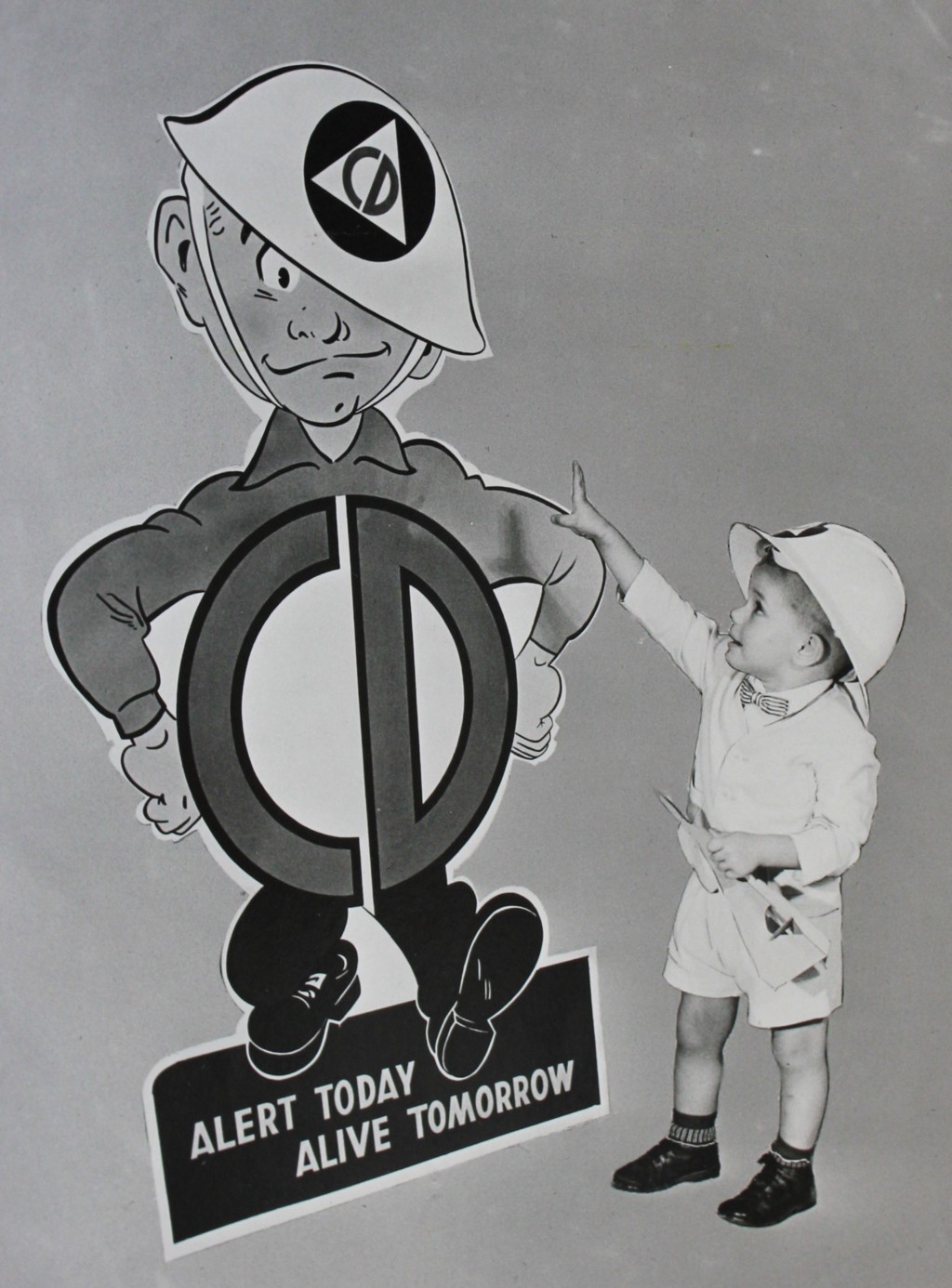
“A mother must calm the fears of her child,” F.C.D.A. director of women’s activities Jean Wood Fuller instructed in a November 1954 address in Augusta, Georgia. “Make a game out of it: Playing civil defense.” Tapped to the post by President Eisenhower, Fuller’s job was ostensibly running civil defense P.R. campaigns aimed at white, upper middle-class housewives. Her projects — a variety of F.C.D.A. leaflets, radio spots, and TV and film programs — and speaking appearances attempted to reassure American women that surviving a nuclear blast was a maternal duty, entailing a manageable set of household chores. “Is Your “Pantry” Ready in Event of Emergency?” asks the widely distributed F.C.D.A. brochure titled Grandma’s Pantry. As historian Elaine Tyler May, Ph.D., argues in Homeward Bound: American Families in the Cold War Era, these programs sought to reinforce conservative values and gender roles by instilling a sense of political purpose into mundane domestic life.
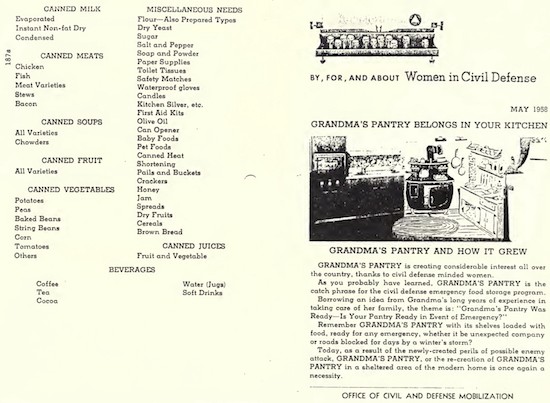
Fuller, the second woman to hold the post under the Eisenhower administration, also drew inspiration from her experience at ground zero of Operation Cue, a nuclear test in the Nevada desert on May 5, 1955. “Twenty-nine of us huddled at the bottom of a trench this morning less than two miles from ground zero,” she recounted cheerily in the Los Angeles Times. The operation, Fuller said, “shows conclusively that women can stand the shock and strain of an atomic explosion just as well as men,” and that “with the proper precautions, entire communities can survive an atomic bombing.”
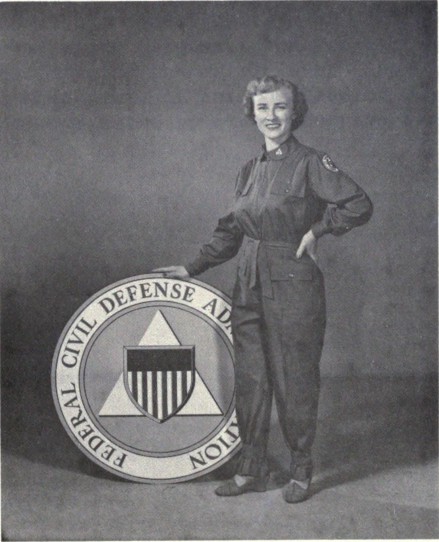
In the May 5 test, a mock-suburban enclave in the Yucca Flats served as the guinea pig. Aptly nicknamed “Survival Town,” the neighborhood consisted of 10 houses in a range of architectural styles. Some of the houses built at the Nevada Test Site featured basement fallout shelters or reinforced concrete shelters in bathrooms. Among various objectives identified in the Cue report, the F.C.D.A. hoped to identify structural weak points and vulnerable building materials. Other areas of interest included how power lines, transformers and radio towers fared the blast, and radiation levels of perishables stored below ground and stocked in kitchen pantries, freezers, and shelters.
Readying the test site for the explosion, civil defense officials outfitted each of the homes with furniture, appliances, canned goods, and mannequins supplied by private industry. Dressed sharply for their doomsday debut, the dolls were perched in living rooms and hoisted into shelters. A less fortunate mannequin family stood upright in the desert fully exposed to the blast, posed as unwitting civilians taking off for a picnic.
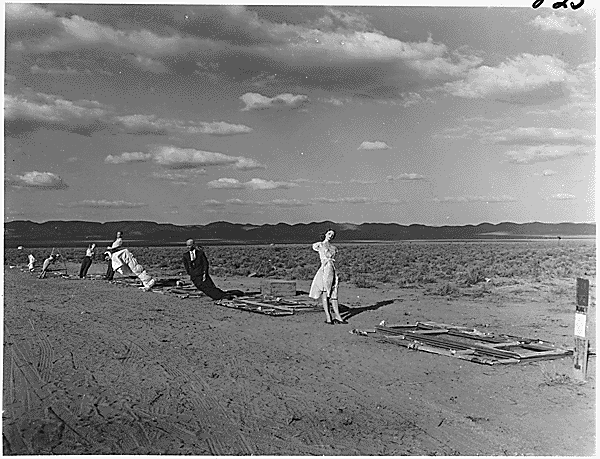
The government had been nuking the area since early 1951, but Operation Cue was novel insofar as it sought to address the domestic side of nuclear fallout. In the 1955 F.C.D.A.-distributed short film chronicling the test, Operation Cue is seen through the eyes of “Joan Collin” — an actress posing as a wide-eyed female reporter. Periodically, an unnamed male co-narrator chimes in to answer Collin’s questions or weigh in on technical matters of electricity, power, and weaponry.
“I was especially interested in the food test program,” Collin’s sunny, placid voice explains. “Canned and packaged foods are to be tested. As a housewife and mother, this appealed to me.”
Making her way through the desert landscape, her account of Operation Cue is cheery, inquisitive, and occasionally surreal.
“Interior home furnishings, donated by industry, are complete in every detail,” Collin observes with breathless admiration. “I look at the mannequin sitting about so indifferently…”
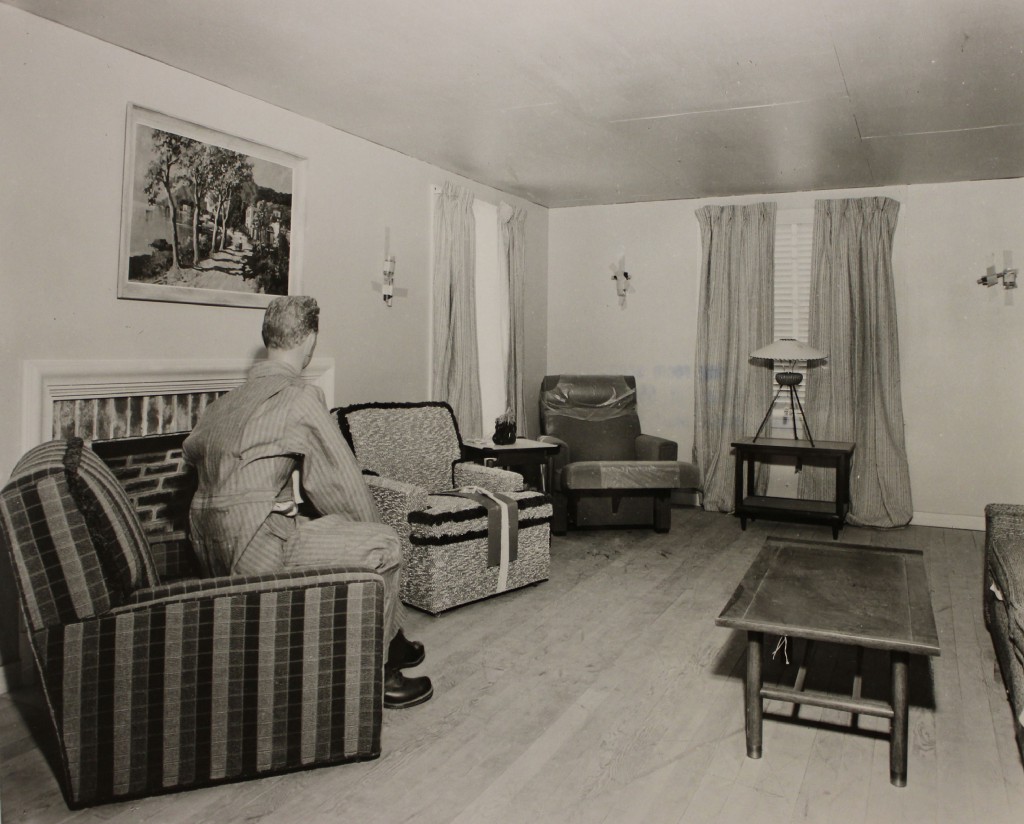
In-between polite questions, she marvels at the expertise of civil defense personnel and admires the skillful planning of the operation. Survival, it seems, is simply a matter of following directions and taking proper care of things.
Officials returned to the blast site the day after the explosion for a meal. Carefully planned by the F.C.D.A., the menu included coffee, baked beans, and sirloin roasted over a charcoal fire, suggesting that American everyday life and its comfort foods could prevail in face of nuclear devastation.
According to anthropologist Joseph Masco, some of the decapitated mannequins were even flown out to hospitals by an emergency rescue group in order to practice evacuation techniques. Masco’s report, published 2008 in the journal Cultural Anthropology, argues that visual images of nuclear ruins played a fundamental role in the formation of the post-World War II national security state. These images, Masco writes, further “created a new citizen-state relationship mediated by nuclear fear.”

“Everyone in civil defense was trying to project confidence that a nuclear attack could be survived,” historian Laura McEnaney, Ph.D., the author of Civil Defense Begins at Home: Militarization Meets Everyday Life in the Fifties, told me over email. “Mothers had to set the tone for families — to educate children, in particular, about what they should do. Their games and drills were little different than fire drills in schools.” Cutesy propaganda like Grandma’s Pantry harkened back to idyllic, simpler days while tapping into free-floating anxiety about communist infiltration, modern warfare, and other perceived threats to social order.

Though Fuller’s work on the widespread “Grandma’s Pantry” campaign significantly amplified F.C.D.A. outreach to housewives and mothers, many of the program’s fundamental principles were established by her predecessor, Katherine Graham Howard.
Howard had spearheaded similar efforts as the Eisenhower administration’s liaison to women’s groups and the general public. She broke down women’s roles in nuclear warfare into four tasks: learning about different forms of warfare (biological, chemical, nuclear), teaching the rest of the household, keeping the kids calm, and preparing a bomb shelter. An adequately prepared shelter would contain nonperishables, water, sanitary supplies, as well as toys and games to entertain the children.
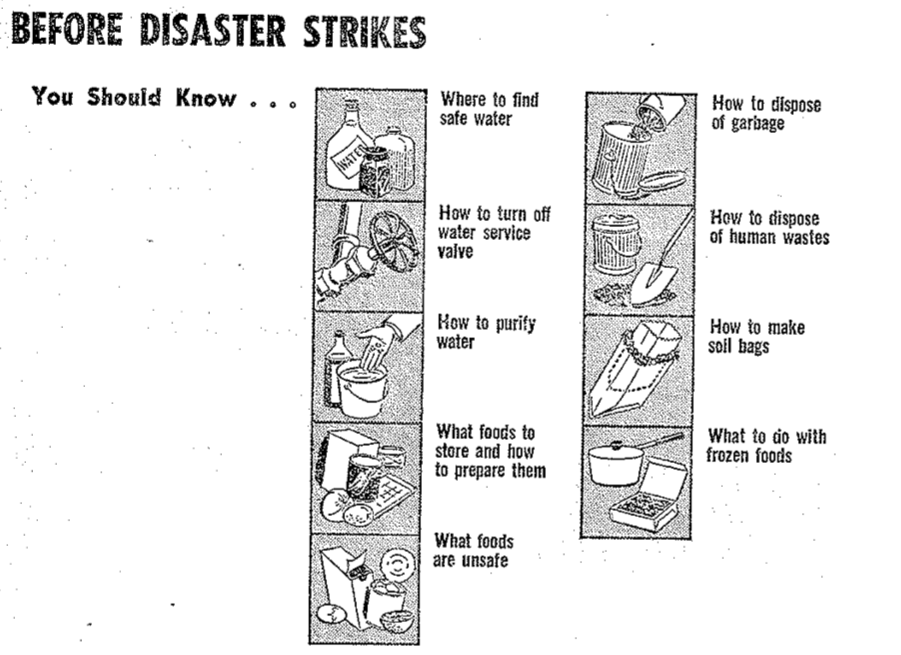
As noted by McEnaney and other scholars, it is impossible to pin down exactly how many women volunteered during this period — agency records fail to differentiate volunteers by gender. “With the lack of adequate reporting, the best figures suggest about four million people participated formally as volunteers in local civil defense programs across the country,” she told PBS. “More Americans probably read and paid attention to the information, stocked a few supplies here and there, had the air raid shelter instruction card taped to the inside of their kitchen cabinet. But it’s very hard to give specifics on numbers of participants.”
Surveys also noted a disparity between public support of shelter programs and how many people actually built them or considered doing so. In a 1960 Gallup poll, 71 percent of respondents said they would support a law requiring communities to build public bomb shelters, but only 11 percent of respondents said they had personally taken any steps to prepare for a nuclear blast; furthermore, 61 percent of survey participants said they would not pay $500 for a family shelter. A 1961 national survey conducted by researchers from the University of Michigan found that only 6 out of 1,474 respondents — 0.4 percent of the sample — had constructed fallout shelters.
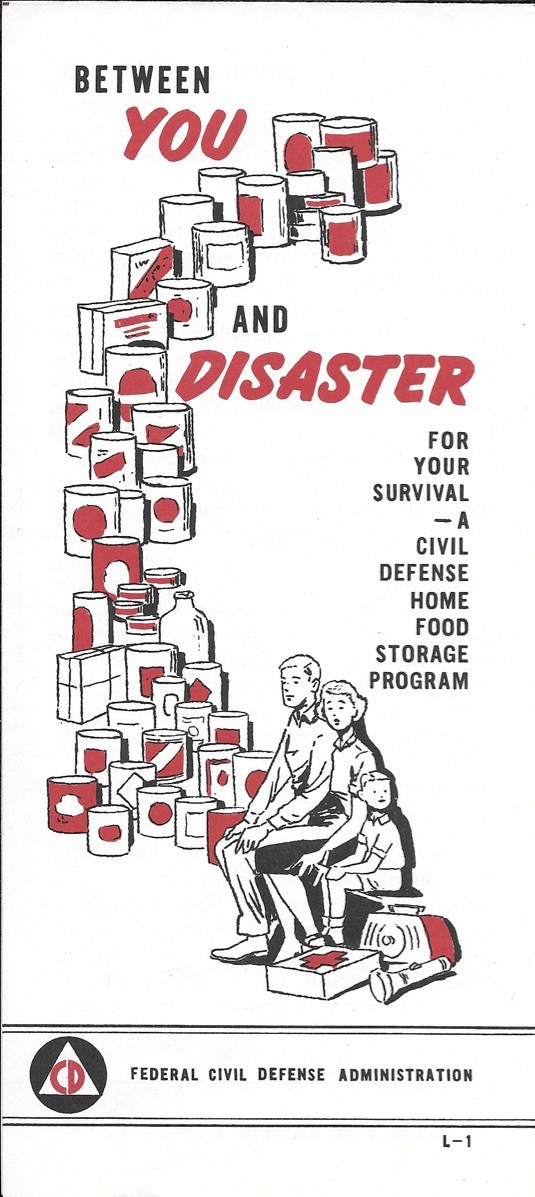
In the process of turning bored housewives into self-fashioned civil defense activists, the F.C.D.A. also galvanized a substantial — and ultimately more enduring — oppositional movement. In November 1961, approximately 50,000 women in 60 cities across the country left their pantries and took to the streets calling for an end to the nuclear arms race. The movement, Women Strike for Peace (W.S.P.), “baffled both the press and the politicians,” writes activist and scholar Amy Swerdlow, herself a W.S.P. participant. W.S.P. called for an end to the nuclear arms race and rejected characterizations of domestic female identity expressed in civil defense literature. Instead, the strikers linked maternal identity with peace activism. The November strike came together using women’s networks, with D.C. organizers spreading word through local P.T.A.s, the League of Women Voters, established peace groups, and religious organizations, as well as word of mouth, Swerdlowe recounts.
The women earned praise on both sites of the iron curtain; Jackie Kennedy and Nina Khrushchev both penned letters to lead organizer Dagmar Wilson offering their support, reports the New York Times. “As mothers, we cannot help but be concerned about the health and welfare of our husbands and children,” Kennedy wrote. In Homeward Bound, May attributes Kennedy’s rhetoric with encouraging white middle class participation in the peace movement and other activism in the early 1960s.
A 1970 issue of Science reports, “[Science Advisor Jerome Wiesner] gave the major credit for moving President Kennedy toward the limited test ban treaty of 1963 not to arms controllers inside the government but to the Women’s Strike for Peace and to SANE and Linus Pauling.”
Called to testify before the House Un-American Activities Committee in 1962, WSP leaders emphasized the mission as distinctly fueled by maternal concerns. “The movement was inspired and motivated by mothers’ love for children,” Blanche Posner, a New York W.S.P. volunteer office manager, told the HUAC. “When they were putting their breakfast on the table, they saw not only the Wheaties milk, but they also saw strontium 90 and iodine 131… They feared for health and life of their children.”

Fallout fever didn’t entirely die down, but the focus of civil defense programs shifted towards public shelters during the Kennedy years. Kennedy also restructured the civil defense program in 1961, allocating shelter projects to the Department of Defense and incidentally cutting formal ties between F.C.D.A. officials and the network of women’s clubs and organizations. Coupled with the proliferation of anti-nuclear movements, Kennedy’s pursuit of détente after the Cuban missile crisis tempered much of the public fixation on doomsday planning.
The urge to prep never fully went away. A 1992 Washington Post Magazine exposé uncovered a West Virginia fallout shelter built underneath the Greenbrier luxury resort designed to house members of Congress.
“I never mentioned it to anybody,” former House Speaker Tip O’Neill (D-Mass.) told the Post. “But every time I went down to the Greenbrier — and I went there half a dozen times — I always used to look at the hill and say, ‘Well, that’s where we’re supposed to live in the event something happens, and that’s where we’re going to do business, maybe under the tennis courts.’”
In a January report, Buzzfeed News documented a Trump-era revival of doomsday “prepping” among Bay Area yuppies and other people intent on enduring such catastrophes. “We’re still living in the shadow of the Cold War,” said May. “I think we’re living even more in the shadow of the nuclear age, with the saber rattling of the Trump administration.”
The quaint theatrics of Operation Cue and Fuller’s Home Protection Exercises are just that. A 1964 revision of the footage of Operation Cue prefaced the film of the 1955 atomic test with a caveat characterizing the 30-kiloton bomb as primitive and meager compared to weapons developed since.
It would be nice if our mothers could save us, as would be nice if the worst-case scenario meant spending a few days eating spam and playing chess, then going on with things. These are good fairy tales to swap idly and make for cheerier games than counting how many of our weapons would obliterate us and in what order.
